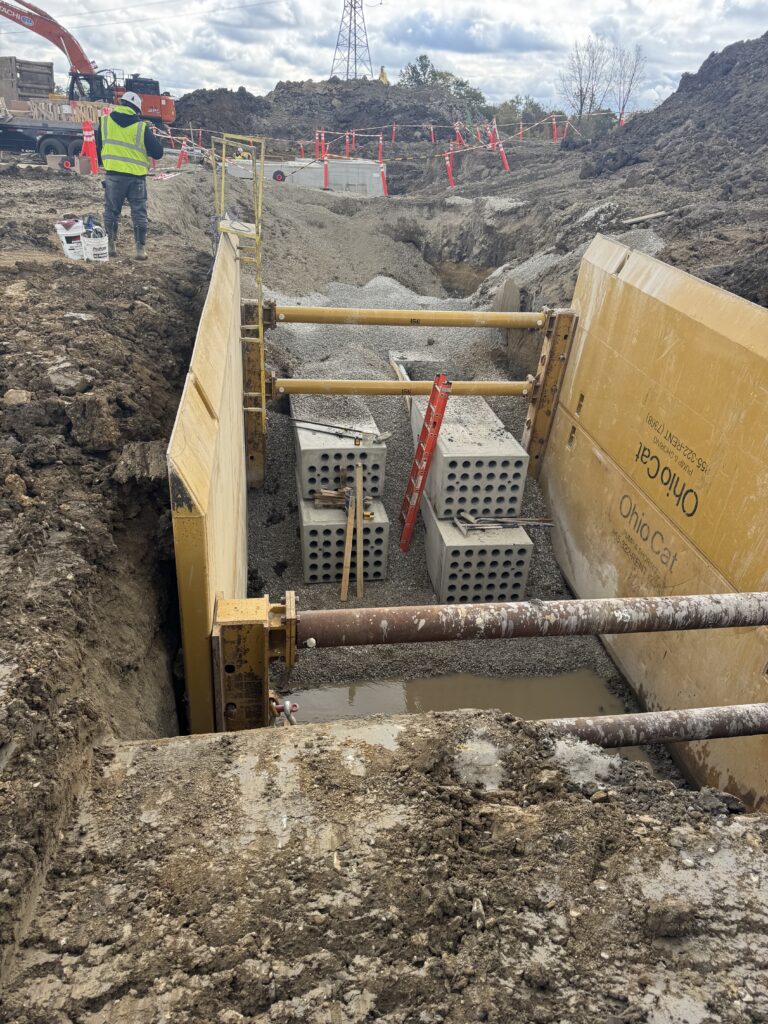The construction industry is entering a new phase of accountability — not just in how projects perform, but in how they’re built. Off-site, prefabricated systems are leading that shift, transforming what used to be a carbon-heavy process into one that’s measured, predictable, and responsible.
DBO’s model fits squarely inside that movement: engineered precision, controlled production, and measurable environmental gains — all without slowing a project down.
Prefabrication: The New Green Standard
A decade ago, “sustainable” meant specifying different materials. Now it means building differently. Prefabrication reduces the largest variable in a project’s environmental footprint: inefficiency. Every hour saved on site — fewer equipment hours, fewer truck trips, fewer idle crews — is a direct carbon reduction.
In DBO’s process, this efficiency isn’t an add-on; it’s baked in.
- Controlled production minimizes waste and eliminates over-pours.
- Fewer deliveries reduce diesel consumption and traffic congestion.
- Same-day backfill eliminates multi-day equipment idling and dewatering.
- Shorter trench exposure cuts the need for rework and erosion control materials.
Each of these steps lowers a project’s resource use — not theoretically, but in the measurable ways every sustainability report now requires.
Efficiency Is Environmental
For years, sustainability was framed as a tradeoff — greener meant slower or more expensive. Off-site construction has flipped that logic. DBO’s clients see environmental and operational benefits at the same time because efficiency and sustainability now move in the same direction.
- When the trench closes faster, emissions drop.
- When crews work fewer hours in the field, risk and energy use fall.
- When precision eliminates rework, waste disappears.
These are not marketing metrics; they’re the byproducts of disciplined process control — the same control that keeps DBO duct banks consistent from one site to the next.
How Data Center Growth Is Driving the Shift
Data centers are growing faster than any other construction segment. Independent industry analyses show the North American hyperscale market expanding 20–25% annually, with sustainability now written into every design brief.
Owners and GCs are turning to off-site manufacturing because it does what no field-built method can:
- Maintain carbon accountability across hundreds of identical builds.
- Deliver repeatable results for compliance documentation.
- Keep massive programs on schedule while meeting ESG mandates.
As that growth continues, precast and prefab systems will no longer be niche — they’ll be the default.
What “Green” Really Looks Like Underground
At DBO, sustainability isn’t about labels; it’s about engineering smarter infrastructure:
- Concrete batched and cured in controlled environments.
- Materials sourced through rail-fed supply lines to reduce transport emissions.
- Mix designs verified through Environmental Product Declarations (EPDs).
- Field processes that reduce manpower, machine hours, and exposure.
It’s the convergence of safety, efficiency, and environmental responsibility — all measurable, all repeatable.
Looking Ahead
As more owners demand transparency in their supply chains, prefabricated, off-site construction will define what “green” means in heavy infrastructure. For DBO, that future is already here. Every section we produce eliminates waste, shortens schedules, and lowers carbon without compromise. Because the most sustainable projects aren’t just built cleaner — they’re built smarter.



